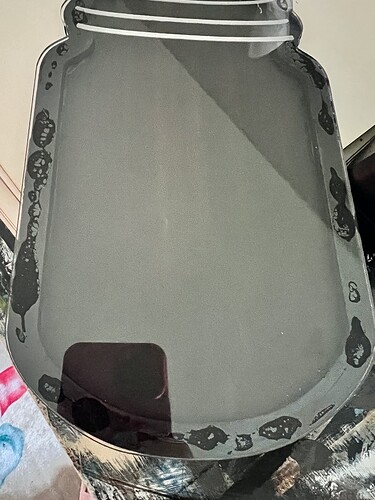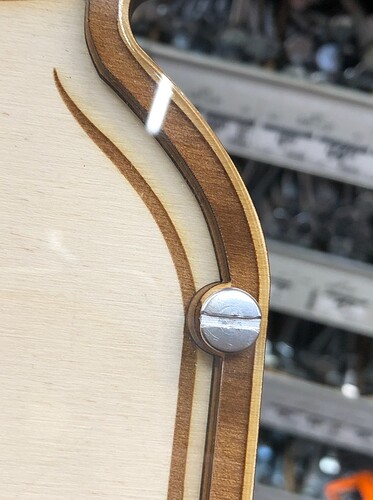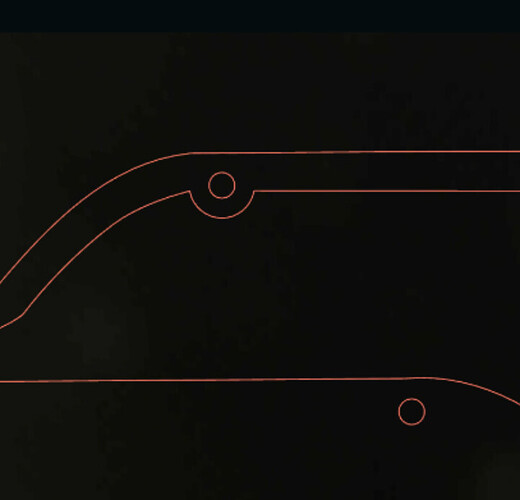I need to glue clear acrylic to wood and was wondering if anyone knows what glue I can use so that it dries clear and does not show up on the finished product. I attached a photo.
This is a tricky one, and as far as I know there’s no simple answer. There is a website that helps you find glues that will work, but getting it to be clear is really tough.
If nothing else this should help you narrow down possible glues.
In my mind, clarity is more about process than it is about the type of glue. Figuring out how to uniformly apply it with no bubbles is clutch – I’ve never been able to work it out. If it were me, I’d be thinking of ways to modify the design that don’t make it so difficult to pull off – especially if you plan to make several of these. If it’s a pain to get it right then it’s 5x as much pain if you need 5 copies. ![]()
Maybe someone has cracked this and will come in with a good answer. Good luck!
Your best bet is to put a separate piece on the front in the shape of your frame. Wood veneer or other thin material (you can get wood, ply and acrylic in 1mm or even less…)
I would agree with this. I’ve done quite a bit of gluing wood to acrylic, but most times it’s not a clear acrylic which is the worst for showing the glue. A like-shaped frame can hide lots of messes.
You might also look into picking up some glue dispensers. They come in sets of just bottles but also some with syringes. They make precise application much easier. They also make E6000 in small tubes that are also very easy to use and come with fine tips. I quit using the real liquid weld-on and switched instead to a gel-like version in a tube as well. Very easy to work with.
I’d try 3M 467MP double sided adhesive film.
I know its not the direct answer to the question at hand but I did almost that same project and used Chicago screws and it worked great.
I’ve used the 3M 467 tape. It still shows, but it’s an even pattern and added a little to the effect. I don’t have any pics to show you. But you could try it on some scrap and see what you think.
You will likely never see a product in a store where clear acrylic has been glued to wood, or any other material, in a visible area. If acrylic is used, it’s fixed with hardware, slotted in, or glued where the glue is covered by something in front of the acrylic.
That said, Danielle Wethington has shared a pretty comprehensive test/guide to what glues appear the clearest behind clear acrylic if you still want to go down that path: A Comprehensive Guide to Gluing Acrylic - Danielle Wethington
Did you make your own spot for the holes in the file?
Thank you so much!
I tried the E6000, but not the jewelry and bead one. Do you happen to know how they differ?
I was thinking of doing that, but wanted to see if there was the glue alternative first. Thank you
Thank you! I wish I didn’t have to use clear acrylic! I’ve already tried 2 different glues, so I will keep going until I figure it out or do something else. Thank you!
Yea I added the hole and also built up the middle layer. So there was enough to have a hole
I don’t know if they do. Just the jewelry and bead version comes with needle-point applicators.
It’s the best I’ve found for bonding wood to acrylic, or metal.
Another possibility is uv resin. It has the advantage of not hardening until you expose it to light, so you have plenty of working time to get placement right. You would have to seal or paint the wood first, to prevent the resin from wicking down the sides. UV resin connections can be a bit brittle, though, so it wouldn’t do for a project that gets a lot of bumping or handling.
UV resin is no different to other epoxy resin adhesives, except it can be cured faster under UV light than “traditional” resin epoxy. Both will be visible behind clear acrylic, although epoxy is thick like paint, so if you apply a very uniform coating across the entire surfaces to be bonded, you’ll at least get a uniform result. That is easier said than done.
CA adhesive would be equally effective but equally difficult to apply in a uniform manner so that provides a uniform result when viewed thru clear acrylic. CA is not as effective between wood and acrylic as E6000. Neither is epoxy, as both are unable to chemically bond with plastics, but with enough surface area, both would work.





